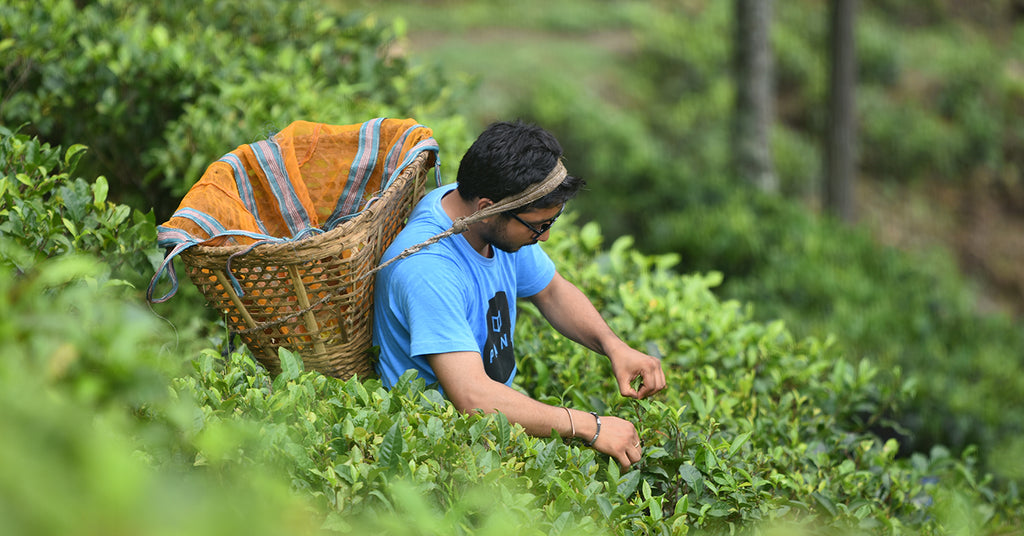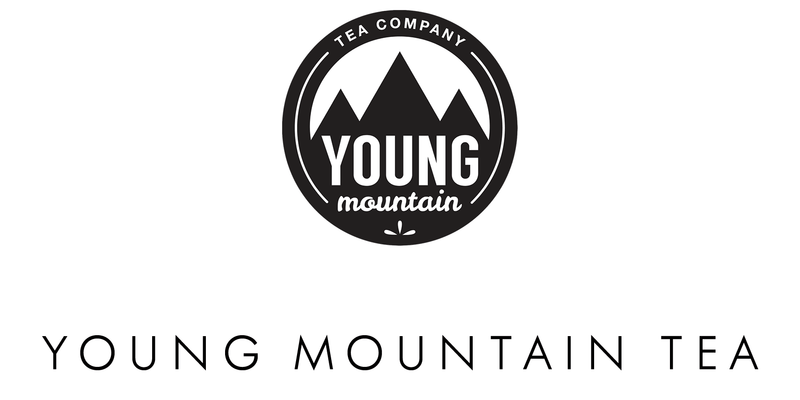The Past & Future of Nepali Teas

Las Vegas wasn’t where I imagined meeting Nepal’s famed Baskota family. Then again, it was a chance encounter that led me to Nepali tea to begin with, so perhaps this unexpected location was fitting. As I reached through the glaring artificial light of the windowless Las Vegas Convention Center at the 2016 World Tea Expo, accepting tea from the cheerful, young man named Nishchal on the other side of the table, I was on the verge of a cup of tea that would spark the collaboration that embodies the spirit of our work today.
History of Nepal
I first began researching Nepali loose-leaf when I was looking for examples of community-led tea efforts that could inform our work with small tea farmers in Kumaon, India. Picking my way through contradictory stories was like unravelling a great mystery novel. The plot line went something like this: In the mid-1800s, the Emperor of China gave tea seeds to Jung Bahadur Rana, the Prime Minister of Nepal. Rana’s administration was keen to create homegrown agricultural industries, and tea was reported to be a lucrative one. Given that the mountain nation’s eastern border was with Darjeeling, where the British were just launching tea efforts, he chose five districts to be the foundation for a new Nepali tea trade. And since most of Darjeeling’s labor was originally from Nepal and traveled fluidly across the porous border, this choice assured more than just ideal weather would be crossing into the five districts—expertise and saplings were sure to come too.
The tea bushes grew well, and initially Nepal’s harvested leaves were sent to Darjeeling for processing. Then in the 1970s, the Nepali government began to process the leaf. With support from European governments, international development NGOs, and small investments from private investors, Nepal was building a viable tea industry. Being landlocked made it difficult to establish supply chains, especially since the ports all had to run through India. The Kolkata-based tea titans were on the rise, and they resisted the Nepali newcomers to the tea scene. Further, internal politics among Nepali communities and inconsistency in the tea’s quality prevented Nepali traders from luring larger buyers looking for easy, reliable volume. Those issues persist today, and as a result, most people who drink Nepali tea never know it. Much of it is sold as "Darjeeling" tea, compensating for the undersupply of Darjeeling tea that inexplicably always meets demand.
However, the internet carried rumors that some tea farmers were now working to carve out a new, independent Nepali tea identity. Free from the baggage of tradition, novel experimentation was said to be underway.
Kanchanjangha Tea Estate
One of the leading experimenters, and arguably one of the most important figures for modern Nepali tea, is Mr. Deepak Prakash Baskota. Born on the lush mountainsides of far eastern Nepal, Baskota visited nearby Darjeeling when he was young and was struck at how prosperous Darjeeling tea farmers were in comparison to his, a few hours’ walk away.
Inspired by what he saw in Darjeeling, Mr. Baskota dove headfirst into understanding how to build a tea industry in his community. His first step was to see if local soils had the right nutrient profile to grow tea. To do that, Mr. Baskota carried two sacks full of soil by foot on a three-day journey to the nearest testing laboratory. There he learned two things: first, that tea could indeed grow, and second, that a handful of soil would have been enough to confirm it. For the next three years, he grew tea on his family’s parcel of land, learning each day how to improve his techniques and learn from his mistakes.
To replicate the fantastic estates of Darjeeling would require buy-in from many farmers in order to have enough land to produce tea of any volume. However, local village members were initially reluctant to trust the young, unproven farmer’s experimentation with a crop that took seven years to reach maturity. Over time, Mr. Baskota’s healthy tea plants and charisma caught the attention of many nearby farmers. The community surrounding the garden, once leery of his efforts, became excited by the potential and contributed their lands to the garden's growth. In 1984, Mr. Baskota set up a tea factory and simultaneously adopted an organizational framework focused on raising the living standards of the villagers without destroying their way of life.
The Kanchanjangha Tea Estate (KTE) is named after nearby Mt. Kanchanjangha, the world’s third-highest peak (behind Everest and K2). KTE quickly became the first Nepali tea estate to be certified organic and with ownership established similar to a co-op model. This means that the workers in the factory and garden are not just employees of the company but are partial owners. Beyond that, all full-time farmers receive free housing, daily necessities at a subsidized rate, and free education.
Along the way, Mr. Baskota got married, and with his wife, began to build a family. Their youngest child, Nishchal, would later end up standing across from me at the World Tea Expo in that windowless convention center room in Las Vegas in 2016.
Nishchal moved to Kathmandu when he was two years old and spent most of his childhood there. He later came to the US to attend a small liberal arts college in New Hampshire, where he pursued his then-dream of becoming a CPA.
However, he had inherited his father’s entrepreneurial spirit and ethic of service, and when the devastating earthquake of 2015 ripped through Nepal, just months before Nishchal’s graduation, he headed back home to help. While volunteering in the tea garden, a shipment of KTE’s teas destined for Germany was held up due to local political unrest. Nishchal was brokenhearted to see that it was the farmers who were most impacted by the conflict, their daily income caught in its crossfire. The experience changed Nishchal’s trajectory, and in March of 2016, he founded Nepali Tea LLC to help establish an identity for Nepal’s teas internationally.
Our Trading Relationship
Nishchal and I hit it off in Las Vegas, and then we ran into each other many times over the next few years at different tea events across the country and in various chat forums across the internet. We sent tea back and forth through the mail, and realized we had a shared interest in using tea to catalyze social and environmental change. A few years later, during my first visit to KTE, I had the chance to meet Mr. Deepak Baskota, Nishchal’s father, and he lived up to the legend. His cheerful eyes, light bouncy step, and endlessly classy fashion, complete with a scarf and sharp hat, made him radiant.
Once we began to sell KTE’s teas, I worked with Nishchal’s sister to coordinate international shipments. Later, when we brought American tea buyers to visit KTE, I worked with another sister to organize the visit and learned about the family’s work to develop a domestic market for KTE’s teas. Recently, another family member left a lucrative finance career in New York to join Nishchal in uplifting Nepali communities. The family’s complete commitment to growing Nepali tea and empowering the farmers along the way remains an inspiration.
Today, our relationship with the Baskotas is multidimensional—they are our supplier, broker, thought-partner, and mentor. We source several of their teas, work with them on organizing shipments from other Nepali growers, discuss key business decisions from sales to fundraising, and even get their input on how to design the new factory for our work in Kumaon. Collectively, I like to imagine these dynamics create a web of friendships that will serve the tea trade and the farmers who underpin them. Our success is linked to theirs and vice versa. As the saying goes, we’re stronger together.
Interested in Other Tea Sourcing Stories?
READ ABOUT HOW WE FIRST ENCOUNTERED TEA IN NEPAL
Taste our teas from Kanchanjangha Tea Estate:
Blog Author:

Raj Vable, Founder
Raj has been confounded by the leaf since his first transcendental encounter with white tea in 2010. Three years later, he started Young Mountain Tea to bridge his budding tea obsession with his interest in traveling in the mountains and previous experience creating job opportunities in rural India. He revels in working across cultures and can be regularly found trying to get the rest of the team on board with another outlandish tea project. His favorite teas remain white, and he’s always searching for the next cup of magic.







Leave a comment